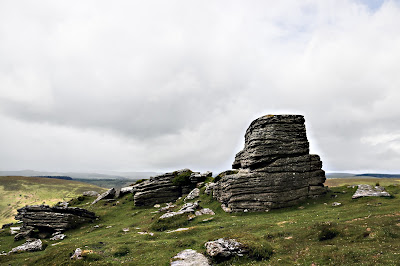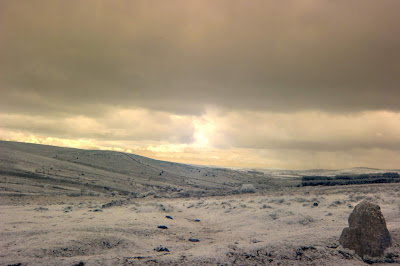Geek alert: I took this opportunity to try some experimental shots with my IR camera. I'm still trying to find out what it is best suited for and I've included a few frames below. For those interested in this sort of thing, it's a Canon 100D body that's had its full spectrum sensor replaced with a 720nm one. I've used grass to set a custom white balance and post-editing is done in Photoshop CC and Lightroom CC.
 |
| Hookney Tor. |
 |
| One of the hut circles at Grimspound. Originally the walls were probably some 6 to 8 foot high with an apical roof thatched with ferns or whatever plant material could be utilised. |
 |
| The marker stone at Two Burrows/Barrows at the end of the Hameldown ridge. I think this IR effect is quite menacing. |
 |
| Guess which way the wind blows from? |
 |
| The main pond at Challacombe. Wildlife friendly and we enjoyed watching the swifts and house martins skim the top of the water for insects. |
 |
| The moss gives a clue to the climate here - wet and humid. |
 |
| Lots of Highland cattle around the old mine workings. They are hardy and very good at keeping the bracken down by trampling on it. |
 |
| On the side of the hill just up from Challacombe Farm is this set of lynchets - the remains of the mediaeval field system. |
 |
| Southern Marsh Orchid. Lots of them around at this time of year. |









No comments:
Post a Comment